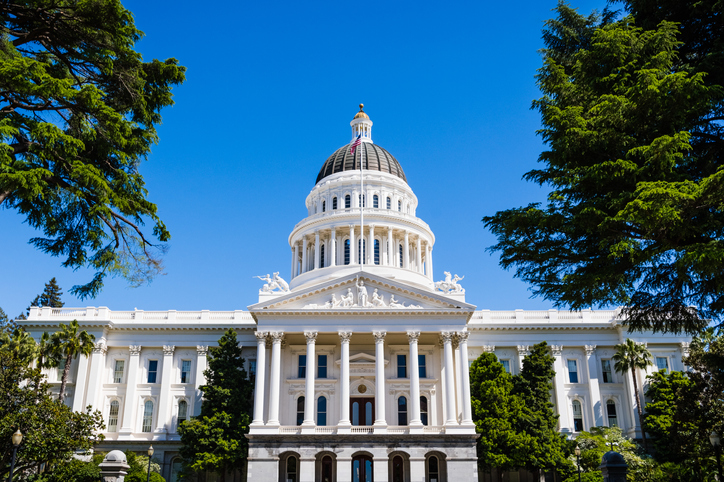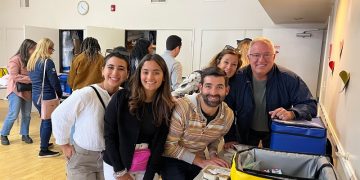Starting with the day in January 1848 when gold flakes and nuggets first turned up at Sutter’s Mill northeast of Sacramento, California has seen plenty of economic miracles, each focused in a different part of the state.
The Gold Rush brought more than 300,000 people to the state, previously a sleepy outpost. The movie industry was the next big miracle, bringing international attention to Southern California for the first time.
The dot.com phenomenon of the 1990s put the spotlight on Silicon Valley south of San Francisco.
Each boom brought the state out of a slump, but sometimes there were also negative consequences.
Now the Monterey Shale formation much further south and southeast of San Francisco promises the next potential miracle, containing two-thirds of all known shale oil deposits in the United States, a possible 15.4 billion barrels of oil, enough to power every aspect of the entire nation for three full years.
But there could also be a price, one that might last many decades, just as the original 49ers and their Gold Rush hydraulic strip mining techniques left tons of mercury in Mother Lode streams. A century and a half later, levels of toxic mercury in fish and amphibians caught there remain significant.
The gold mining of the 19th Century created jobs and made fortunes for bankers, clothiers and many others. Similarly, hydraulic fracking of shale oil and natural gas in North Dakota, to name just one area, has spurred a boom.
But fracking – which sees a combination of water and chemicals injected into the ground to loosen oil and gas previously locked in rock formations – has also created problems with ground water supplies in West Virginia and Wyoming.
Nature magazine reported last October that “A range of hydrocarbons showed up in the deep (Wyoming) wells, as did some synthetic organic chemicals associated with fracking fluids and drilling activities. The (federal) Environmental Protection Agency also … analyzed the evolution of the pollution plume to determine that groundwater seems to be migrating upward, suggesting that the source of contamination came from the gas production zone…”
Encana Corp., a Canadian energy producer operating wells near Pavillion, Wyo., maintains there is no proof drilling operations are to blame, but offers no other explanation for the contamination.
The conflict simmering there could preview what’s to come in California. In fact, fracking could turn into a classic economy vs. environment struggle, with the oil lobby and conservative activists already pushing for large-scale shale oil and gas development. Not that fracking is new to California. In locations as diverse as Long Beach, Inglewood, Santa Barbara and Kern County, it has been used for decades with little regulation and few incidents. But never on the scale now in sight.
“Californians have a choice,” opined the conservative California Political News and Views blog the other day. “We can raise taxes, kill jobs and force government into higher deficits. Or we can drill for oil, using fracking, have a miracle and save the state.”
For sure, fracking brings massive potential upsides, starting with the fact that the Monterey Shale deposits could bring instant properity to towns in the west San Joaquin Valley now best known for their ultra-high unemployment rates. That happened in North Dakota, and there are no reports yet of contaminated drinking water there.
Said a mid-March study from the University of Southern California, “Drilling in the Monterey Shale formation may add as much as $24.6 billion in state and local tax revenue and as many as 2.8 million jobs by 2020…significant migration of skilled workers into California would occur. More job gains can be captured by Californians with appropriate education and training.” That study was partially funded by the oil industry.
Exploiting the Monterey formation also could lessen pressure for oil drilling along the coast, where the ongoing moratorium on new wells is periodically threatened. It could also assure a long-term supply of natural gas.
On the other hand, there’s that precedent from the Gold Rush. No one is sure how long pollutants from fracking might stay in underground aquifers, nor how far they might travel.
So Democratic state Sen. Fran Pavley of Agoura Hills, who authored the landmark 2006 greenhouse gas reduction law behind the state’s new cap-and-trade program for fighting climate change, now wants a comprehensive state study of fracking to be completed by 2015. A bill she’s pushing would also require drillers to inform nearby property owners a month ahead of any fracking operation, as well as telling the state about all chemicals to be used.
Those proposals make sense, as they don’t halt or even put a short moratorium on any fracking plans. But they do serve notice that California wants to protect its drinking water and promote a new economic miracle free of Gold Rush-style harm.













